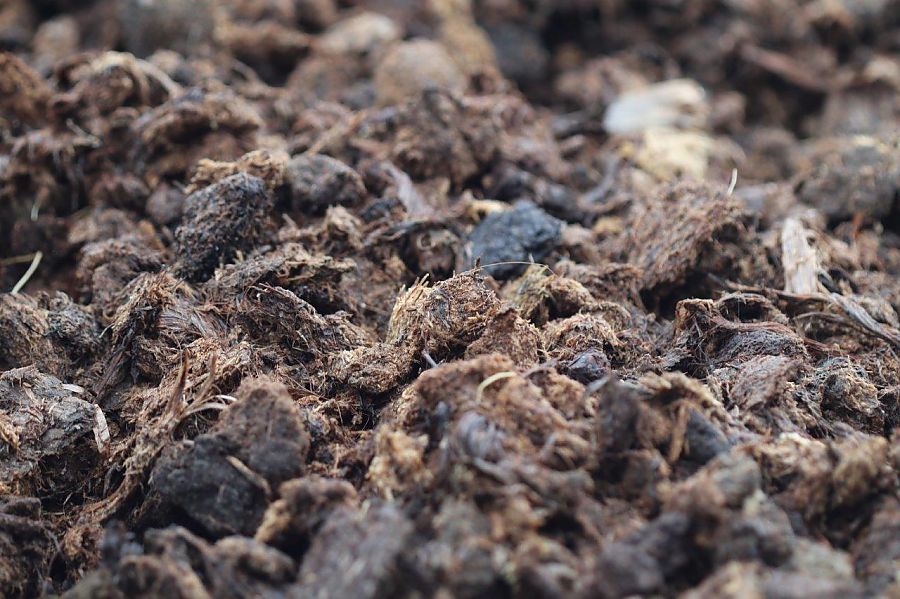The use of peat sifted thick as filler biofilter is widely used in North-Europe.
Peat is unpacked and inoculated at our facility for optimum performance from the few hours of installation.
COMPOSITION
BURÉS PROFESIONAL, S.A. has developed the Sphagnum thick peat biofilter product calibrated from a mixture of thick peat of different origins and particle sizing and treated in the plant to obtain a material that can absorb odoriferous compounds and other pollutants from the residual air stream. The free-living microorganisms that proliferate naturally in this organic material use these compounds as a source of nutrients and energy, via aerobic decomposition.
The particle sizing of the peat provides the porosity as the particle gets thicker.
This processing increases the specific area of the material, enabling the microorganisms to more effectively colonise the medium.
By increasing the specific area of the biofiltration bedding material, a concentration gradient is created in the biofilm, which maintains a continuous flow of mass, from the gas components to the wet biofilm.
ADVANTAGES AND APLICATIONS
This product can be used as a filling material, or as a layer of a multilayer biofiltration.
Biofiltration is a very versatile technique, able to treat odours (ammoniac…), toxic compounds and volatile organic compounds.
The efficiency of the treatment of this elements is higher than 90-95% for low contaminant concentration (<1.00ppm).
The biofilters offered by BURÉS PROFESIONAL, S.A. is a technological alternative respectful with the environment, with an effective control of the atmosphere’s and odours contamination. Some of its great advantages are the following:
• Simple technology and low application cost; economically available to all business.
• High efficiency of volatile contaminants and odoriferous complexes elimination.
• Odoriferous contamination control.
• Nearly null maintenance of the biofilter is required.
• Total decomposition of the contaminants without secondary products creation through the Biofiltering process.
• The filling material is organic, non toxic and biodegradable through composting once its useful life is over.
USED BIOFILTER WASTE:
Once the useful life of the biofilter is exhausted, we take care of the management of organic or inorganic remains.
We are distributors in Spain, Portugal, France, Germany, Italy, Bulgaria, Tunisia, …
Thick peat can be used as the sole material of the biofiltration bedding, or in combination with other materials such as heather.
This type of biofiltration bedding requires regular treatment to prevent it from compacting, for example turning the material over.
Appropriate physico-chemical conditions must be created and maintained to enable the microbiota to proliferate in the bedding material. The essential parameters are temperature, pH, humidity and quantity of nutrients.
Remember that the biofilter filling material must be handled with care to avoid compacting it so as not to increase the energy cost of its operation.
The peat bedding itself should be no more than one meter deep, to prevent it from compacting.
The bedding temperature must be maintained at between 10-45°C.
The pH should always be within a range of 4-7.5.
For highly odorous currents, the air flow must be no greater than 110-130 m3/m2 of bedding.
For less intense odours, the flow can be increased up to 200 m3/hm2 of bedding.
Peat bedding is used mainly in northern Europe, where it is used in agriculture and fish processing.
The performance and useful life of the biofilter also depend on the type of contaminant and its mass load.
Product format:
BigBale 4,5m3
Granulometry 20/40
Ref: P15400


